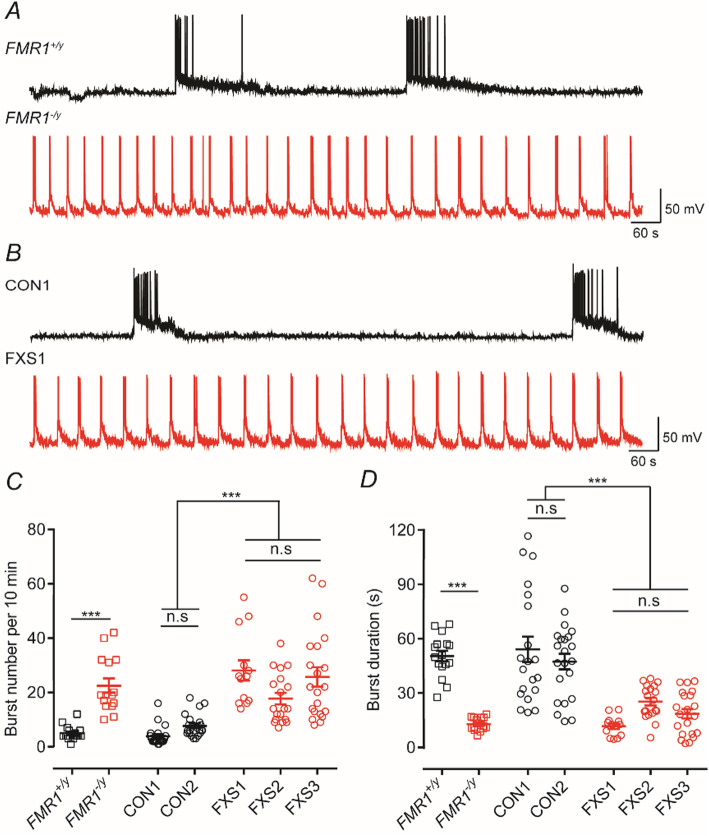Fig. 2.
Bursts of action potentials occur at high frequencies but with shorter durations in neurons lacking FMRP. a Representative current-clamp recording (Vhold = −70 mV) of spontaneous bursts from either FMR1+/y (black) or FMR1−/y (red) neuron illustrating the difference in action potential bursting profiles. b As in a but illustration recordings from hiPSC lines CON1 (black) and FXS1 (red). c Mean burst number per 10 min of recording for each of the hESC and hiPSC lines. Overall, the mean numbers for bursts (per 10 min) are 5 ± 0.65 (FMR1+/y; n = 16, N = 3); 22.53 ± 2.63 (FMR1−/y; n = 15, N = 3); 3.9 ± 0.81 (CON1; n = 20, N = 3); 7.727 ± 0.88 (CON2; n = 22, N = 3); 28.07 ± 3.73 (FXS1; n = 13, N = 3); 17.74 ± 2.10 (FXS2; n = 19, N = 3); and 25.71 ± 3.56 (FXS3; n = 21, N = 3). d Mean burst duration for each of the hESC and hiPSC lines. Overall, the mean durations are 50.4228 ± 2.88 s (FMR1+/y); 12.85 ± 0.92 s (FMR1−/y); 54.15 ± 7.03 s (CON1); 47.38 ± 4.30 s (CON2); 11.66 ± 1.51 s (FXS1); 25.25 ± 2.1 s (FXS2); 18.55 ± 2.58 s (FXS3). ***p < 0.001, one-way ANOVA with post hoc Tukey’s test

